The clouded leopard, a mesmerizing feline of the dense Asian forests, captivates with its enigmatic presence and extraordinary beauty. Despite being one of the most intriguing members of the cat family, it remains lesser-known than its more iconic cousins. Exploring the clouded leopard’s world provides unique insights into the remarkable adaptability and the conservation challenges faced by this elusive predator.
Anatomy and Physical Characteristics
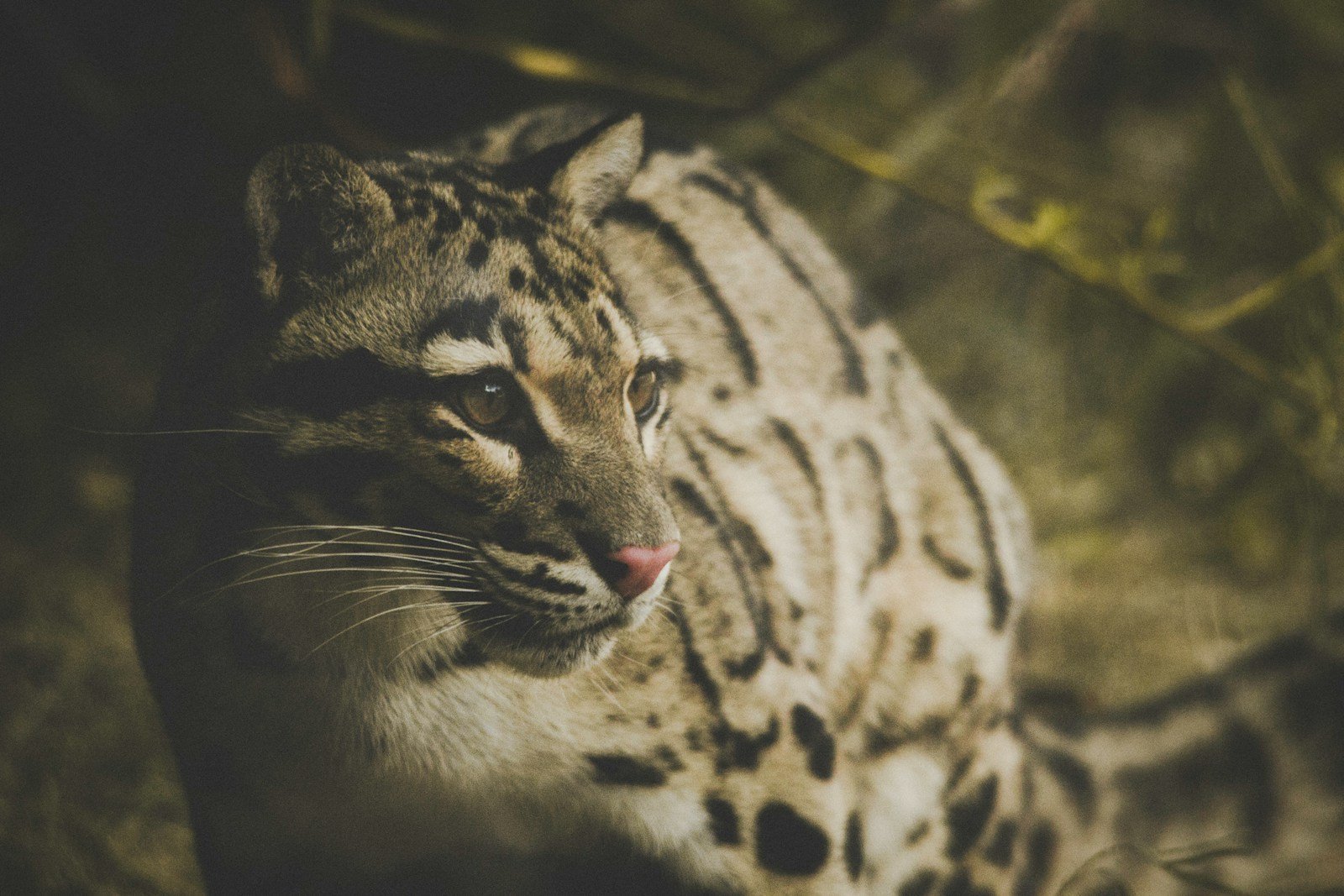
Named for the cloud-like patterns on its coat, the clouded leopard boasts a striking appearance. Weighing between 25 to 50 pounds, it is medium-sized but possesses notably long canine teeth, reminiscent of a saber-toothed cat. Its short but powerful limbs and long tail are perfectly adapted for an arboreal lifestyle, helping it navigate the tree canopy with agility.
Geographical Range and Habitat
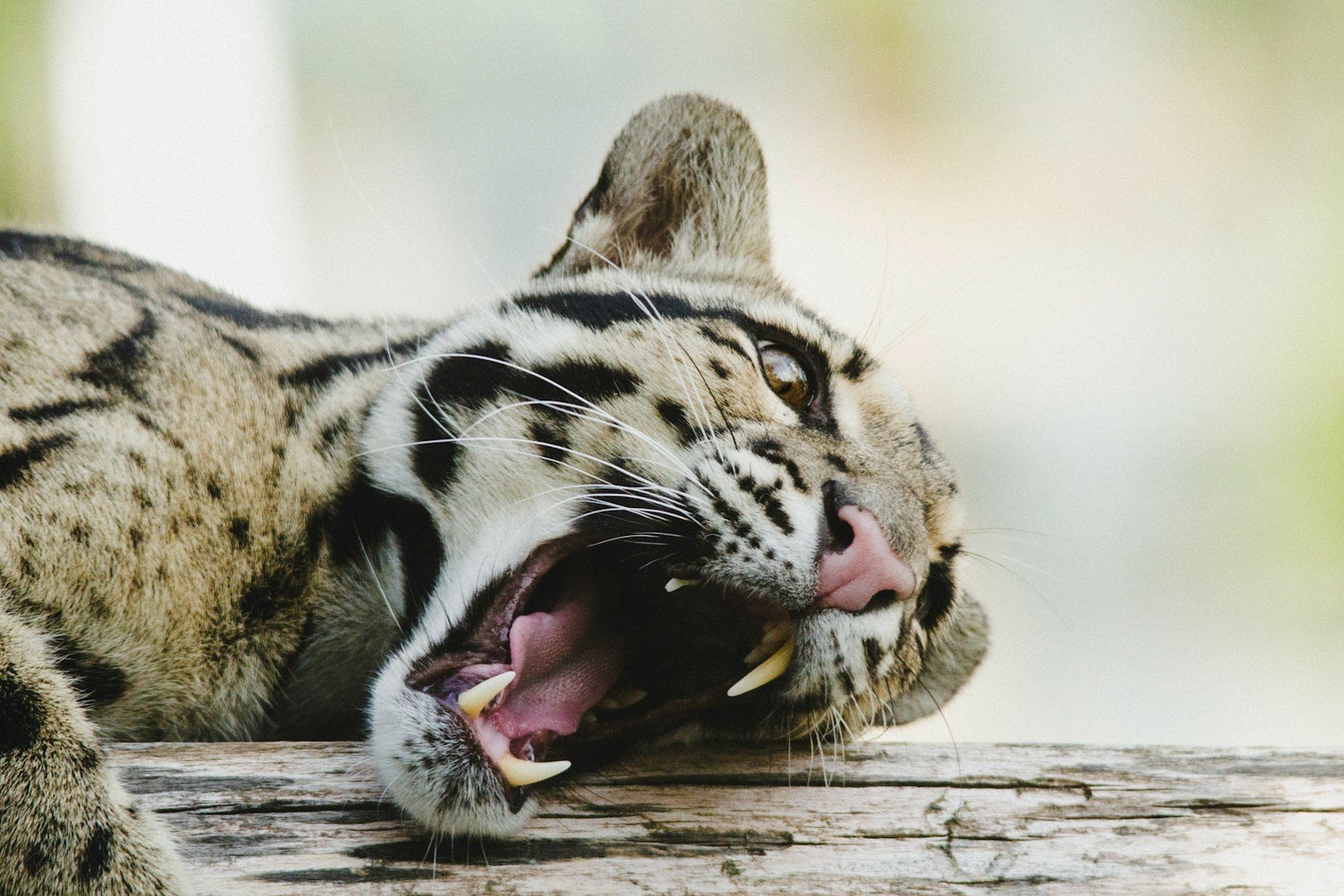
Clouded leopards inhabit the forests of Southeast Asia, with populations scattered across parts of Nepal, Bhutan, Myanmar, and the islands of Borneo and Sumatra. Preferring tropical and subtropical forests, they are expertly adapted to life in dense woodlands where they utilize a vertical space more effectively than any other big cat.
Behavior and Lifestyle
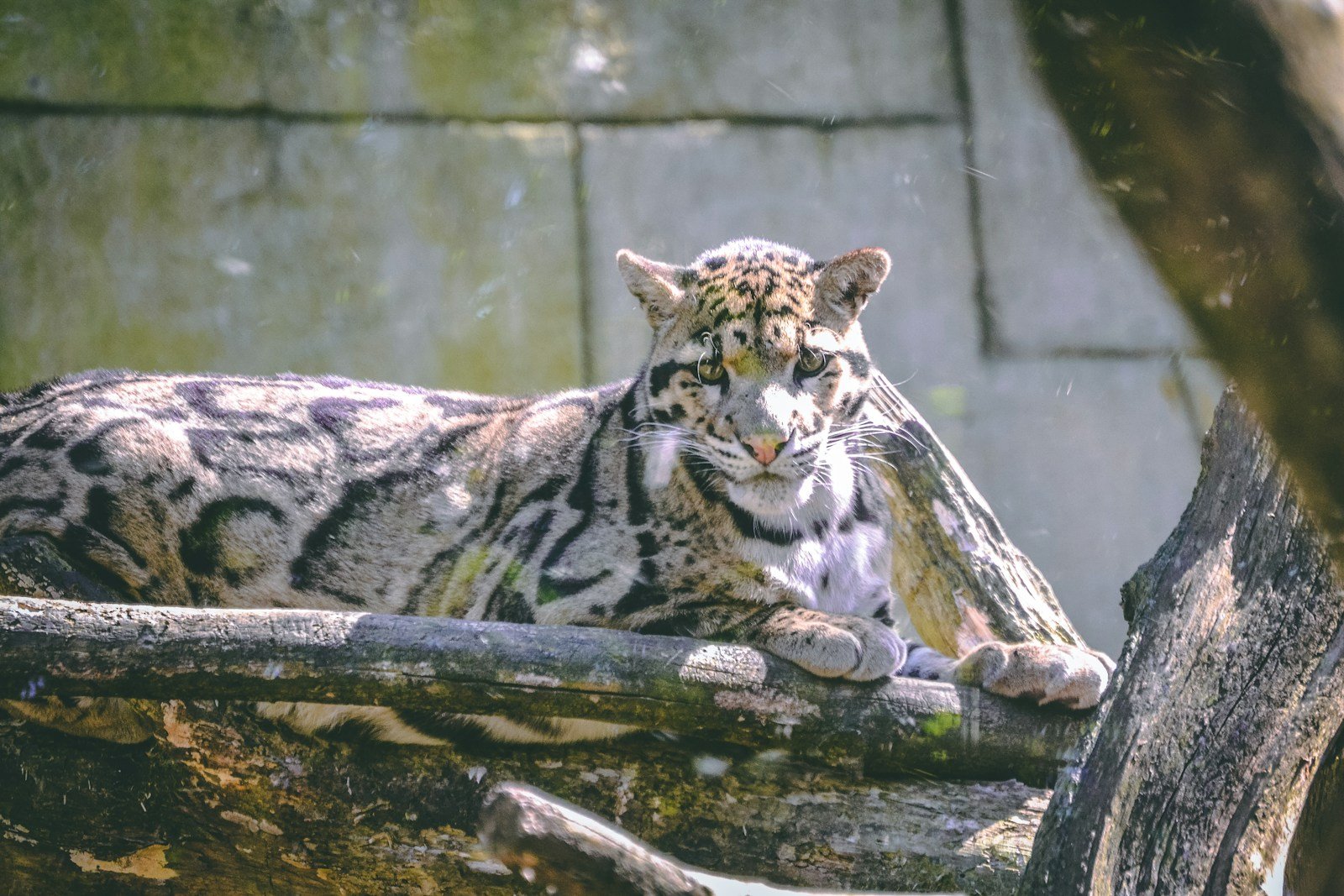
This secretive feline is primarily arboreal and nocturnal, conducting most of its activities under the cover of darkness. Solitary by nature, clouded leopards are rarely seen in the wild, which contributes to the air of mystery surrounding them. Their unparalleled climbing skills allow them to hang upside down from branches and descend trees headfirst, behaviors essential for hunting and avoiding predators.
Diet and Hunting Techniques
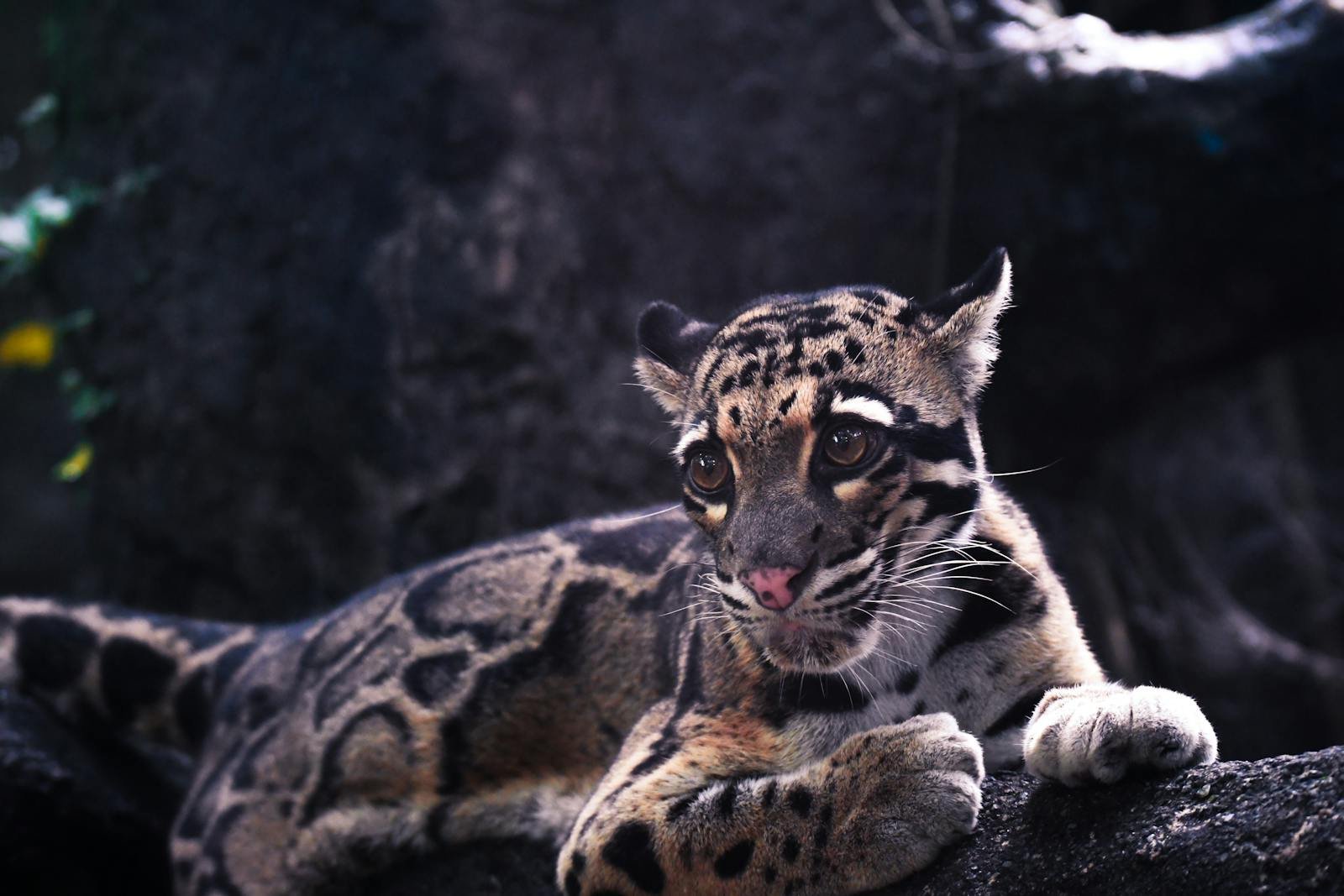
The diet of the clouded leopard is as varied as its habitat. It preys on birds, monkeys, deer, and other small to medium-sized animals, utilizing a stealthy approach to ambush its prey. Its powerful jaws and sharp teeth are well-suited for gripping and subduing prey with remarkable efficiency.
Reproduction and Lifespan
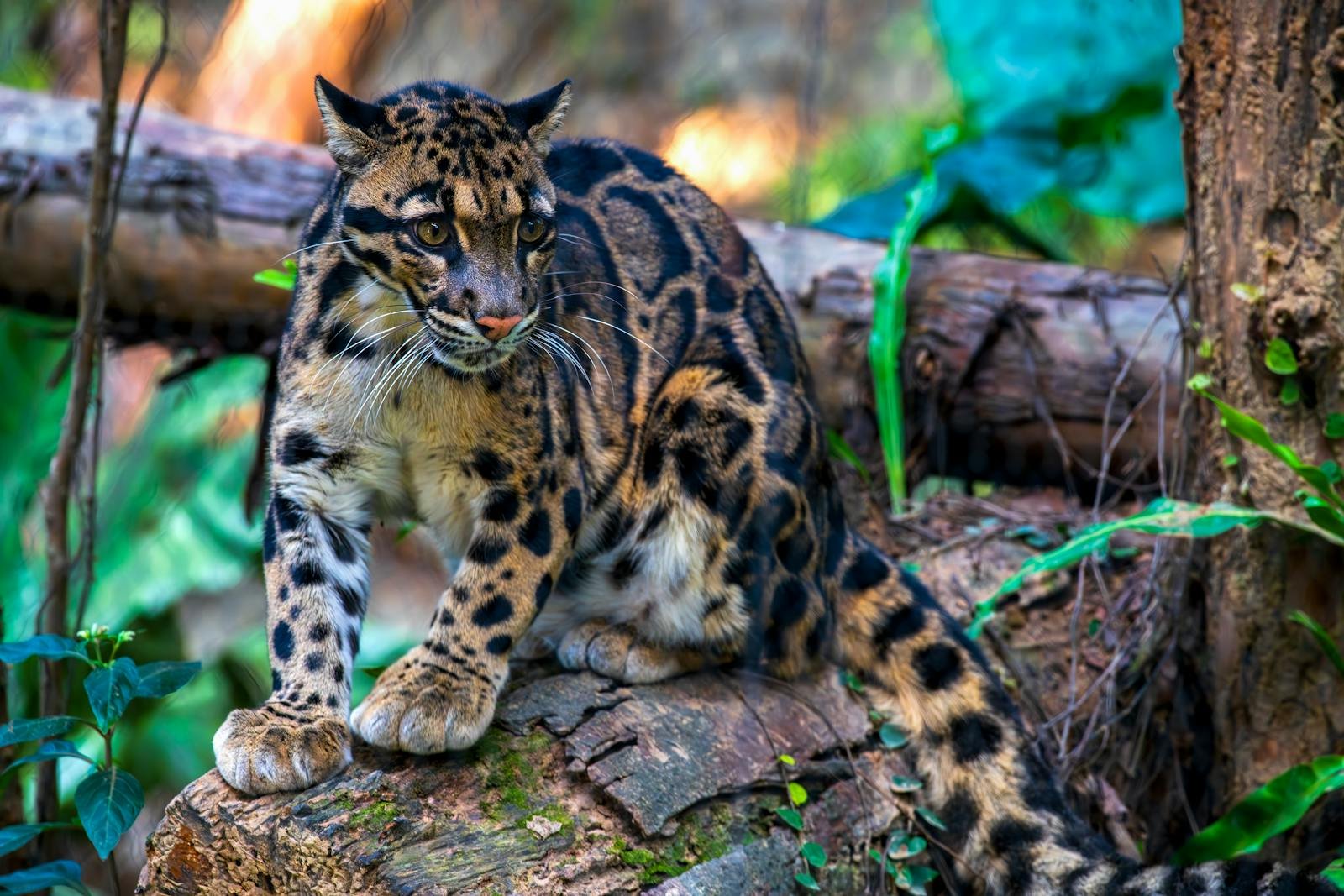
Clouded leopards have a gestation period of about 90 days, typically giving birth to a litter of one to five cubs. The young are born blind and helpless, relying on their mothers for up to 10 months. In the wild, clouded leopards have a lifespan of around 11 years, while in captivity, they can live up to 17 years.
Conservation Status and Threats
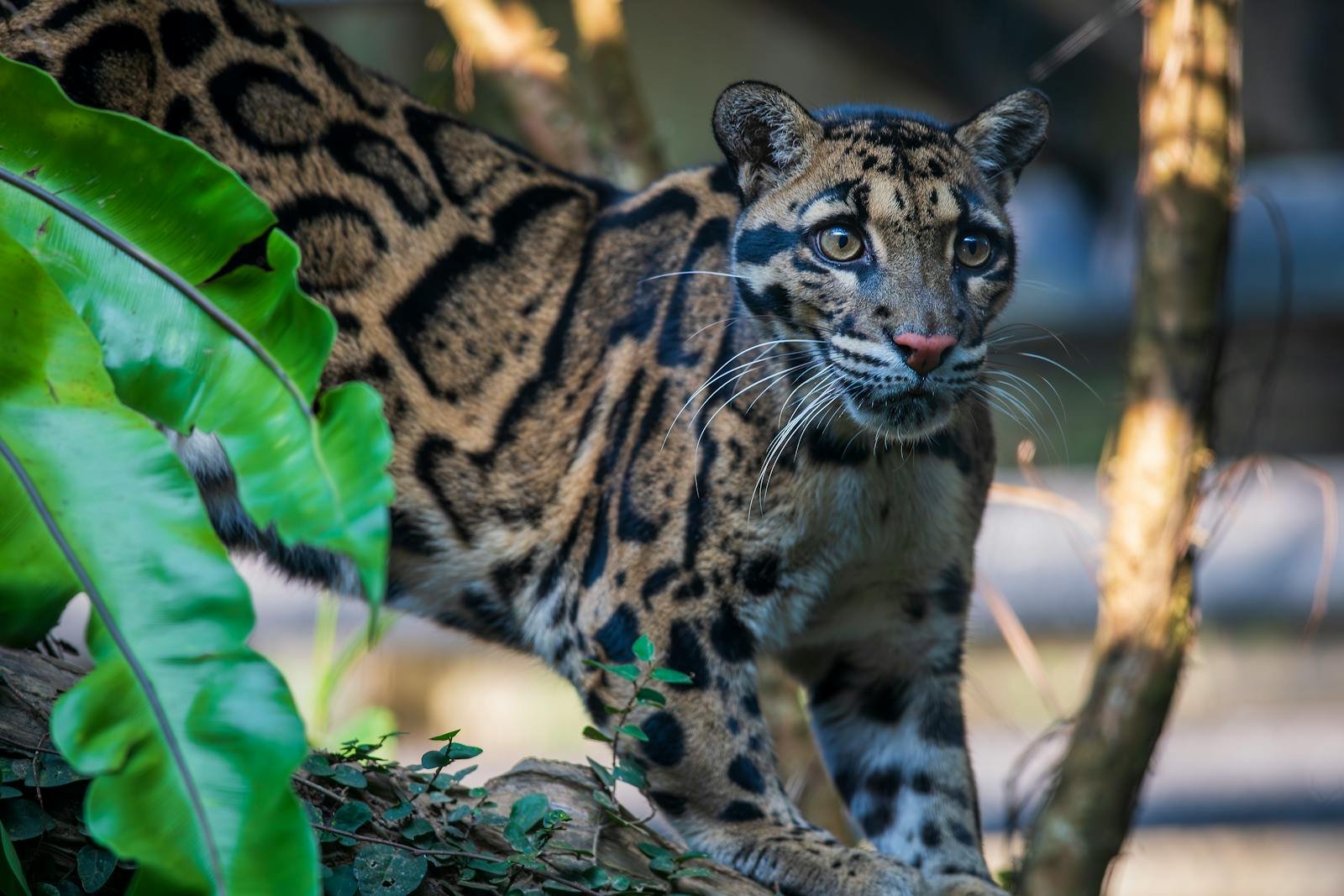
The clouded leopard is classified as vulnerable by the International Union for Conservation of Nature (IUCN). Habitat destruction, poaching, and the illegal wildlife trade pose significant threats to their survival. Deforestation for agriculture and development severely impacts their natural habitat, leading to a decline in population numbers.
Efforts in Conservation
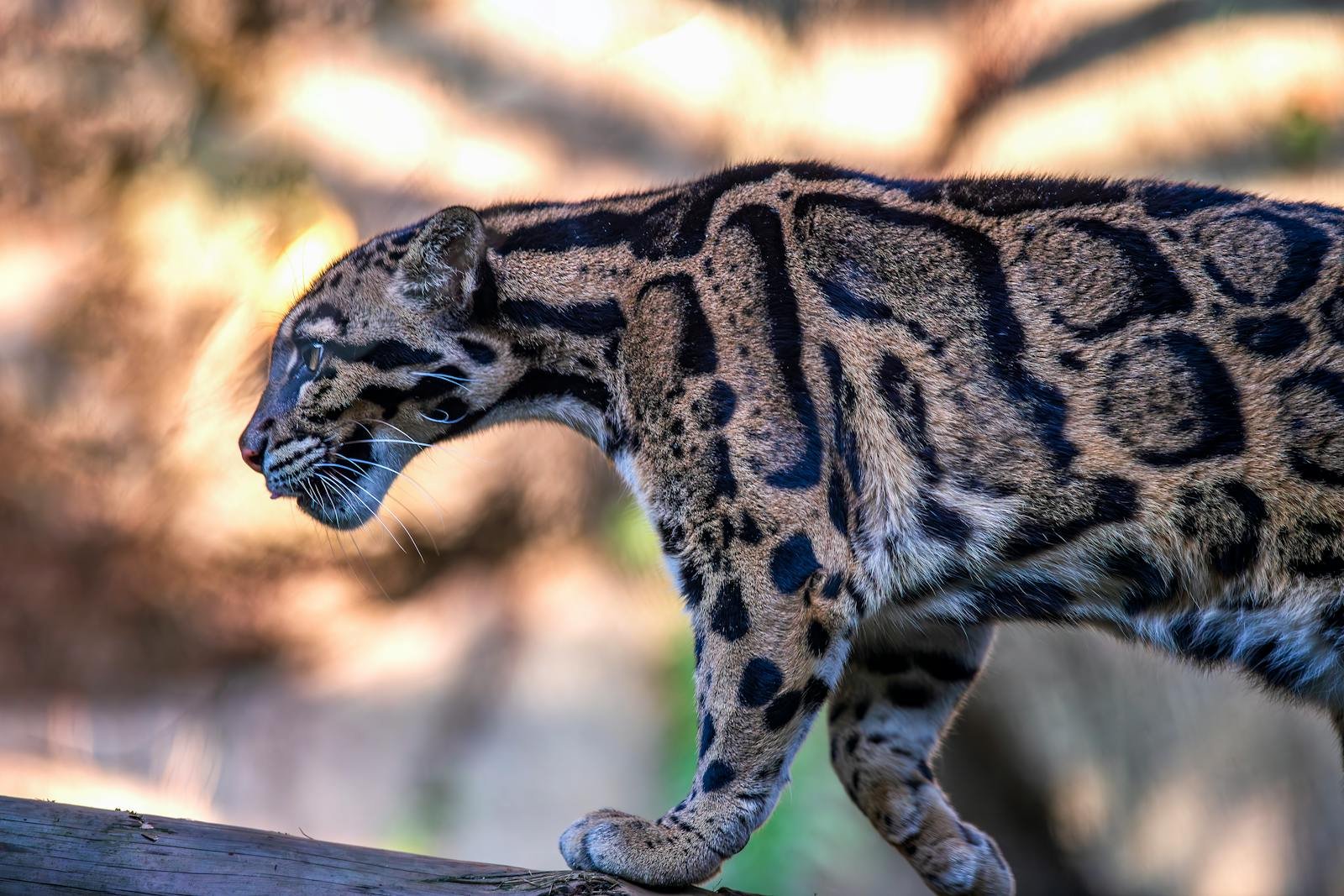
Numerous organizations are working diligently to protect clouded leopards and their habitats. Conservation strategies include establishing protected areas, anti-poaching initiatives, and wildlife corridors that facilitate safe movement between fragmented forests. Education and awareness programs aim to engage local communities in conservation efforts, emphasizing the ecological importance of the clouded leopard.
Research and Observations
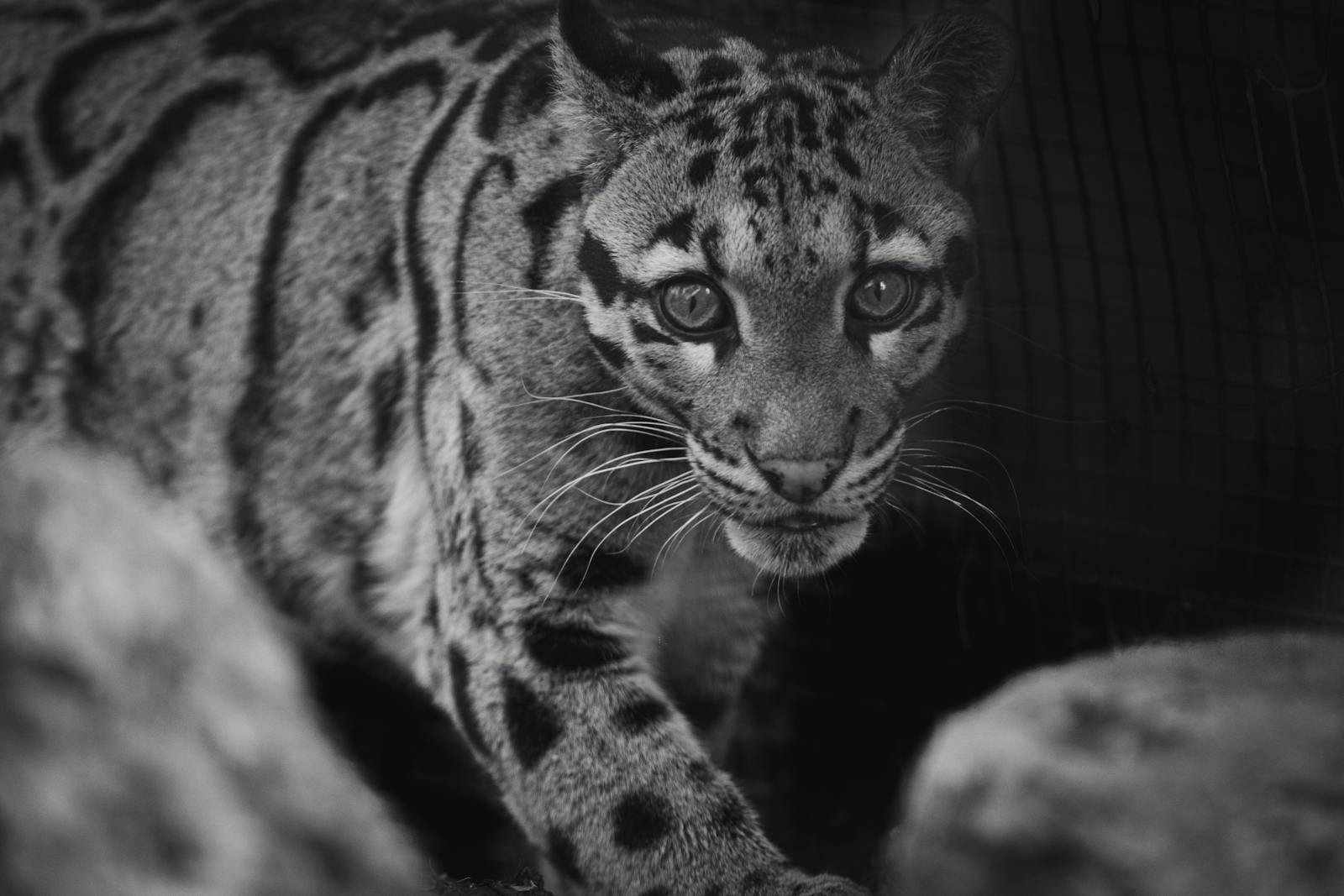
Ongoing research aims to better understand clouded leopard behavior and ecology. Advancements in technology, such as camera traps and GPS collars, have provided unprecedented insights into their movements and habitat usage. These tools are invaluable in crafting effective conservation strategies and ensuring the species’ survival.
The Cultural Significance of the Clouded Leopard
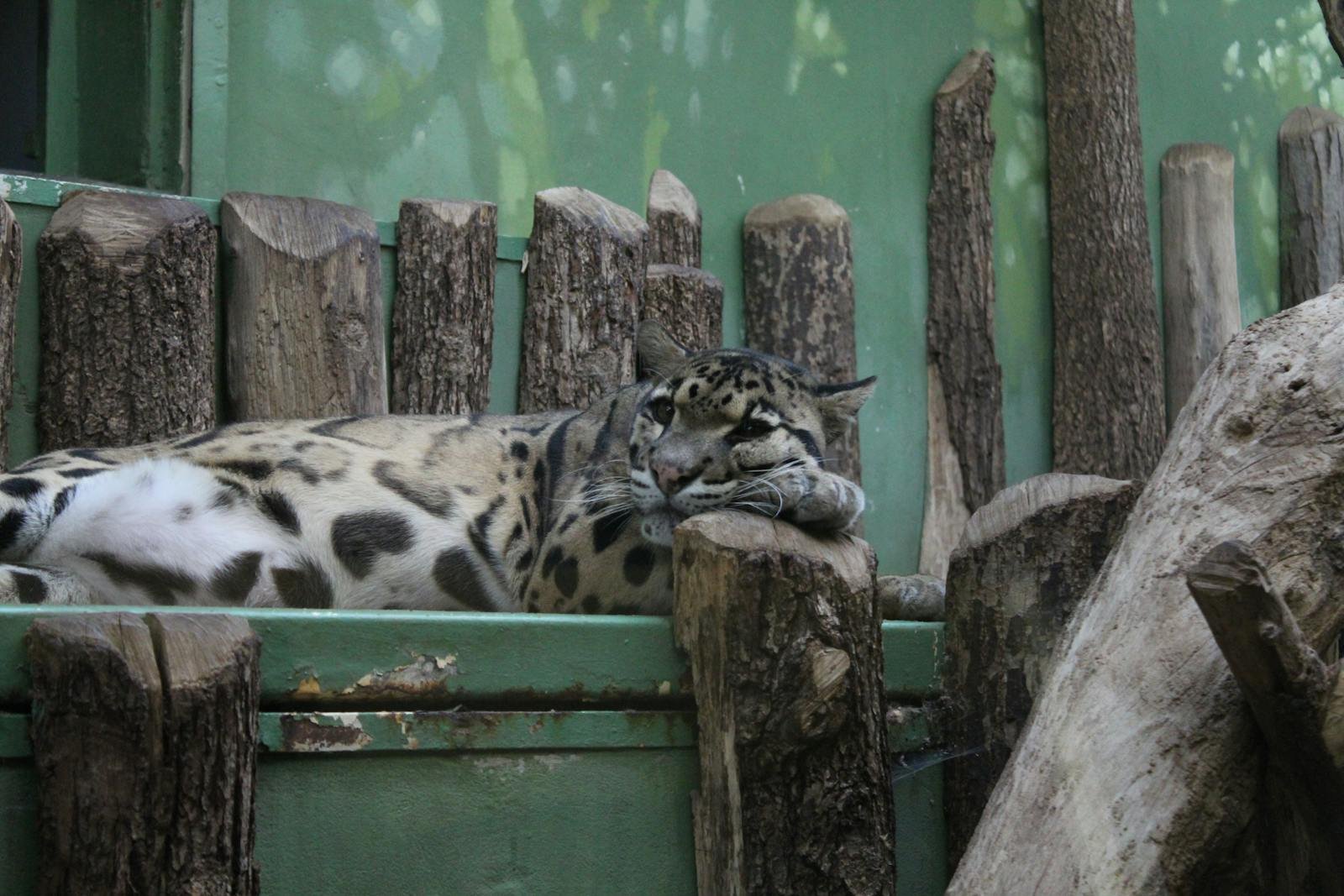
In many cultures throughout its range, the clouded leopard holds cultural importance. It is often depicted in folklore and art, symbolizing strength and agility. Engaging local communities through cultural connections plays a crucial role in conservation efforts, fostering a deeper appreciation and commitment to protecting this enigmatic cat.
Conclusion: The Future of the Clouded Leopard
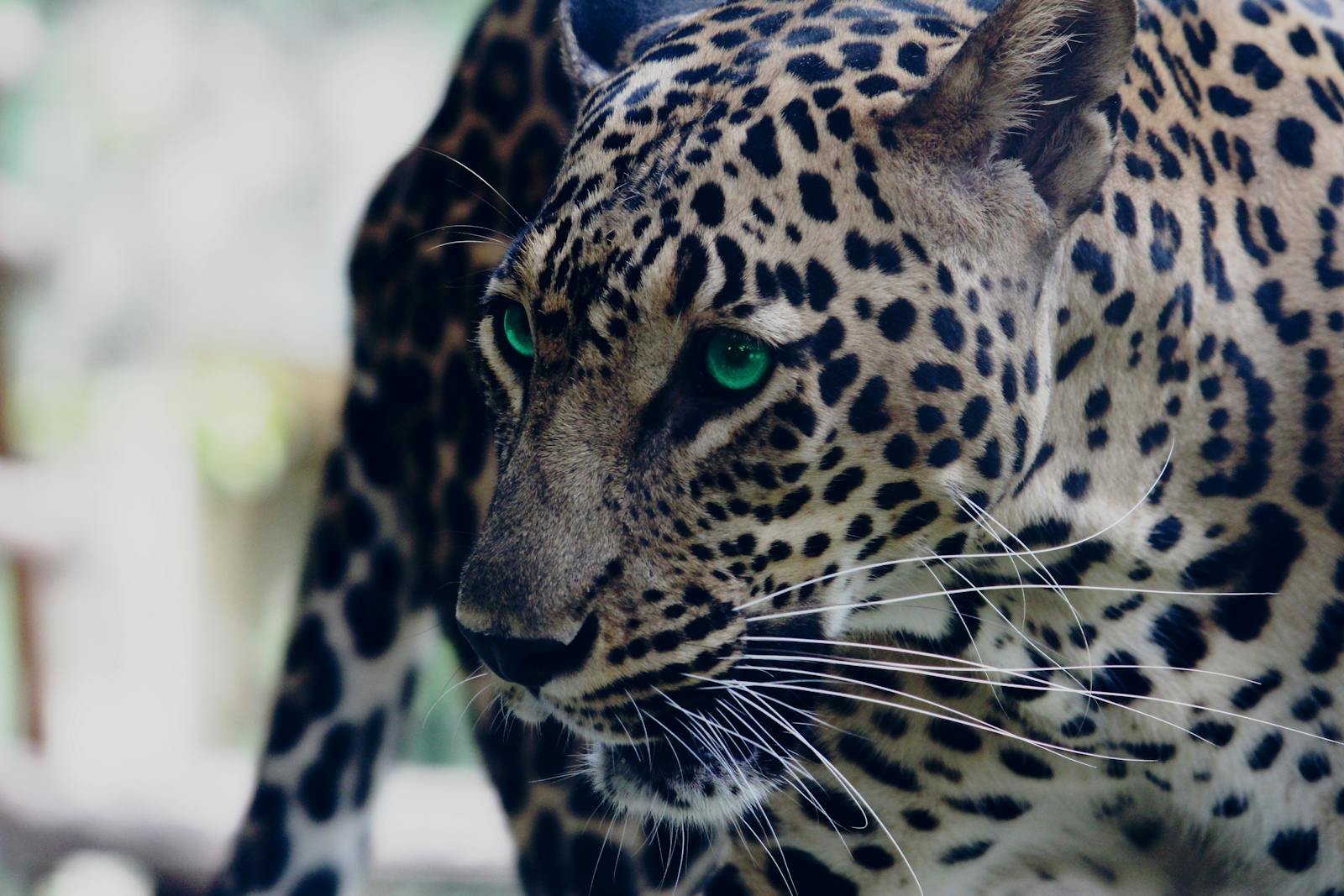
The clouded leopard remains one of nature’s most intriguing mysteries. Its elusive nature and dwindling numbers highlight the urgent need for comprehensive conservation efforts. Through a combination of scientific research, community involvement, and strong conservation policies, there remains hope that future generations will continue to marvel at the majestic clouded leopard in the wild.
Hi, I’m Bola, a passionate writer and creative strategist with a knack for crafting compelling content that educates, inspires, and connects. Over the years, I’ve honed my skills across various writing fields, including content creation, copywriting, online course development, and video scriptwriting.
When I’m not at my desk, you’ll find me exploring new ideas, reading books, or brainstorming creative ways to solve challenges. I believe that words have the power to transform, and I’m here to help you leverage that power for success.
Thanks for stopping by, Keep coming to this website to checkout new articles form me. You’d always love it!






